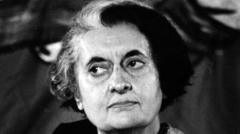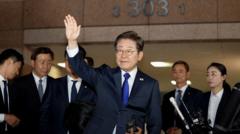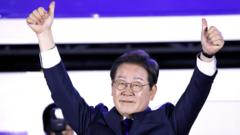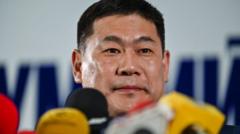The article discusses Indira Gandhi's tenure marked by an attempt to centralize power and push for a presidential system, revealing the complexities of India's political evolution.
The Legacy of India's Unfulfilled Presidential Aspirations

The Legacy of India's Unfulfilled Presidential Aspirations
Exploring the hidden chapter of India's political history concerning the push for a presidential system during Indira Gandhi's rule.
During the 1970s, under Prime Minister Indira Gandhi, India experienced a transformative period characterized by the Emergency declaration, which suspended civil liberties and restricted political opposition. Historian Srinath Raghavan highlights in his book "Indira Gandhi and the Years That Transformed India" how Gandhi's administration contemplated shifting from a parliamentary democracy to a centralized presidential system akin to that of Charles de Gaulle's France.
The ideological leap began in September 1975 when BK Nehru, a close aide and a seasoned diplomat, commended the Emergency’s consolidation of power. He posited that parliamentary democracy was ineffective, arguing for a directly elected president empowered to make decisive, albeit unpopular, decisions in the national interest. The proposal included a seven-year presidential term, changes to representation in Parliament, and restrained judicial independence, envisioning a governance model with the president holding authority over the judiciary and legislative processes.
Gandhi's inner circle received these ideas with enthusiasm, leading to discussions that ultimately produced a secret document titled "A Fresh Look at Our Constitution: Some suggestions." The document proposed radical changes, including a presidency with elevated powers, even surpassing those of the U.S. President. Congress leaders openly expressed support for giving Gandhi lifelong powers, yet she remained wary of the strident calls for a fundamental restructuring of the Constitution.
The culmination of these discussions contributed to the Forty-second Amendment Act, enacted in 1976, which expanded parliamentary power and diminished judicial review, resulting in an imbalance heavily favoring the executive branch. It also allowed the central government enhanced authority over state matters and prolonged Presidential Rule.
Despite these authoritarian measures, following Gandhi's 1977 electoral defeat, subsequent governments worked to undo the centralizing reforms through amendments aimed at restoring democratic checks. By the early 1980s, Gandhi contemplated the presidency herself, viewing it as a strategic move to reinvigorate her party; however, she ultimately did not pursue this route.
Although the desire for a presidential system lingered within Congress even after Gandhi's assassination in 1984, India's political structure remained largely parliamentary. The lessons from this episode reflect the complex interplay of power, governance, and the persistent reluctance to radically alter India's democratic framework. The discussions during the Emergency demonstrate how urgent political pressures can shape a nation’s governing philosophy, leaving a lasting impact on its constitutional discourse.






















